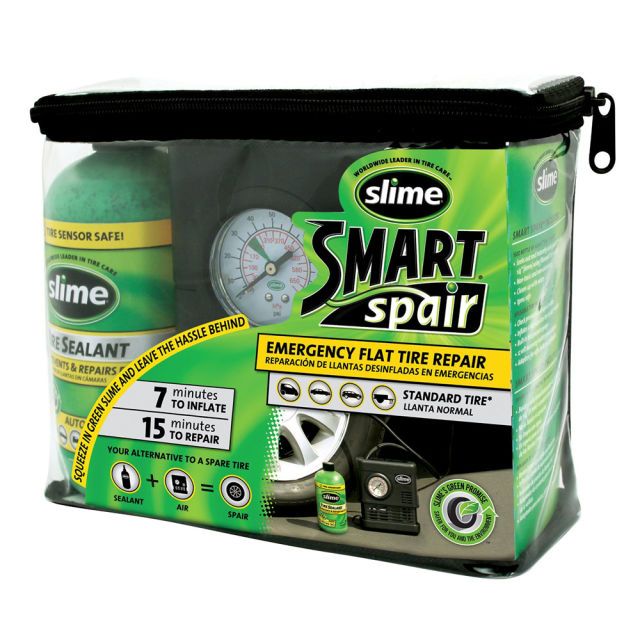On the market today, two of the most popular tire sealants are Fix A Flat vs Slime. Overall, both of these are well worth buying and can meet your urgent needs when it comes to convenience.
However, they certainly have different constructions and features, some to suit your needs and others not really for your vehicle. So this article will have the most objective assessment of the difference between these two types of tire sealants:
Table of Contents
Have you ever wondered how Fix A Flat works? Fix A Flat is a product to help you fix the fastest when the tire has a flat condition. Indeed when you meet your partner, and unfortunately, your tire is flat, Fix A Flat is a beneficial solution for you.
Usually, Fix A Flat will be packaged by the manufacturer in a particular can with the function of sealing the holes your car encounters. Once filled, your tire will inflate and return to its original state. That way, you won’t need special tools or a spare tire as you can fix your tire in no time.
In particular, this product is very environmentally friendly. So, if you use a Fix A Flat, it will help prolong the life of your tires and reduce the amount of time you will throw them in the landfill.
In addition, Fix A Flat cans can be recycled and used many times.
Now, let’s learn about Slime. In 1989 slime first received a lot of positive feedback from users. Overall it’s pretty helpful. So when should you use Slime? Simply, no matter what tire problem you have on any vehicle, such as a car, off-road vehicle, or truck, you can use emergency repair slime.
Basically, Slime tire glue works not too differently from Fix A Flat. However, Slime is guaranteed to patch punctures multiple times for up to two years. However, leading experts believe it is only suitable for vehicles not traveling on highways.
In addition, similar to Fix A Flat, Slime is also an eco-friendly product.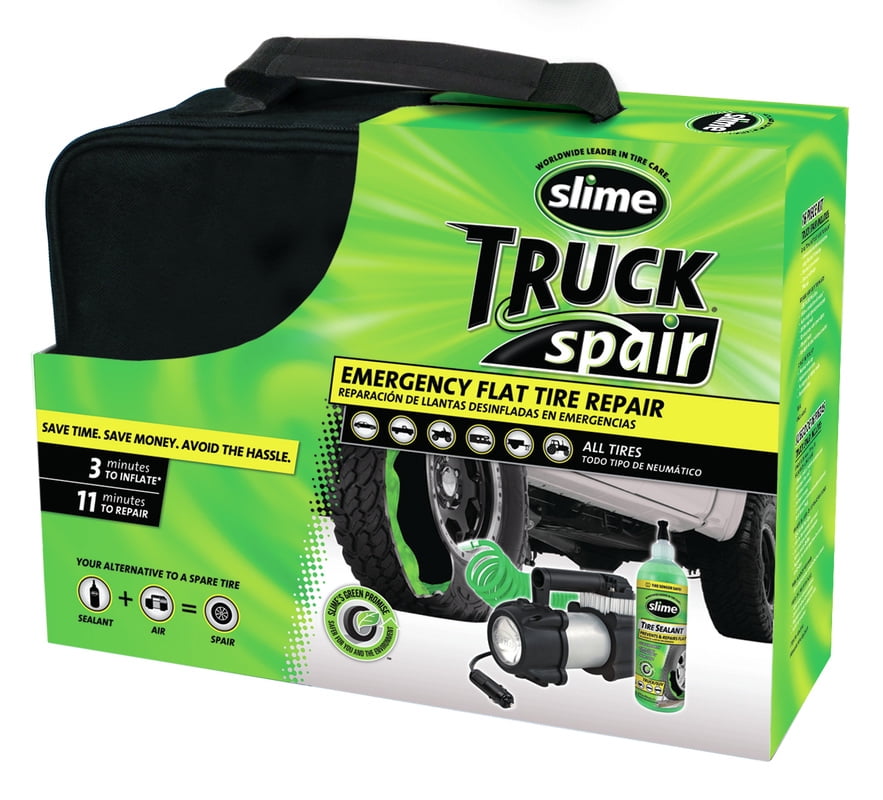 It is generally non-toxic, non-flammable, non-corrosive, and insoluble in water. In addition, it is also not put into any spray by the manufacturer, so it continues to be a plus point for environmental friendliness.
It is generally non-toxic, non-flammable, non-corrosive, and insoluble in water. In addition, it is also not put into any spray by the manufacturer, so it continues to be a plus point for environmental friendliness.
As mentioned earlier, both have similarities; however, you may not have realized some differences yet. These similarities and differences affect your vehicle’s performance and use. Stay tuned and check them out:
Model: Basically, Fix A Flat and slime have similarities. If slimes use seals over ¼ inch diameter, a flat should use ¼ inch hole seals.
Works: Both of these adhesives work great after using it and going on the highway.
Method of use: if the Slime uses Fibro-Seal technology, then Fix A Flat can seal and inflate the puncture site.
Regardless, no matter what box glue you use, it will take you less than 10 seconds to fill the hole
Time: Slime offers the ability to repair multiple times in 2 years however, Fix A Flat claims to have a 33% higher sealing ability
Heat resistance: The Slime’s heat resistance is formidable, it usually will range from -37 poison to 83 degrees Celsius. On the contrary, Fix A Flat will quickly close with temperature of the environment below 37 degrees F.
On the contrary, Fix A Flat will quickly close with temperature of the environment below 37 degrees F.
The right budget: first of all, when talking about the advantages of box glue, you can’t help but mention that it is a budget-friendly solution. Sure, a new tire can’t be cheaper than using box glue.
Quick solution: Next and a definite plus when using box glue. Whether Slime or Fix A Flat, it takes you less than 15 seconds to fix your tire quickly back to its original state.
Puncture prevention: the final plus that makes box sealers the perfect choice is that these sealants can prevent subsequent punctures of the tires, especially if you are constantly moving hard and harsh roads. Thanks to that, it can prolong the life of your car.
Tire damage: using it regularly can cause blockages in your tires and lead to some problems with your tires.
Having trouble in cold places: you will be pretty comfortable using Slime, but Fix A Flat is not a perfect choice when you move in low-temperature conditions.
Corrosion: When used regularly, these substances will cause your car to corrode and cause leaks during use.
In general, every option depends on your needs and wishes to use. You can thoroughly evaluate and consider which product is suitable for you because it entirely depends on the space, time you go, and the environment you live in.
However, there are a few objective notes that we think you should know about these two types of glue. Basically, Slime will work with various vehicles, even with mountain bikes with fire resistance and no risk.
However, Fix A Flat also has plus points thanks to its quick fix and simple and convenient application. In contrast, we always prioritize using Slime as a long-term solution for your tires.
Here are some questions we regularly receive from users:
It’s basically possible to damage a tire without repair. Usually, flat-fixing adhesives are not nearly perfect for areas with year-round cold weather because they can harden quickly. Moreover, defrosting is pretty tricky and time-consuming. There’s also the risk of your wheel losing its balance if it freezes too hard.
Usually, flat-fixing adhesives are not nearly perfect for areas with year-round cold weather because they can harden quickly. Moreover, defrosting is pretty tricky and time-consuming. There’s also the risk of your wheel losing its balance if it freezes too hard.
Basically, Slime will not spoil even if you keep it for a long time. However, you can stop using it if it appears moldy or dry. You can store Slime in the fridge, zip bag, and it can last for weeks or even months without refrigeration. If your Slime contains borax, it’s unlikely that it will fail.
Finally, I hope you have noticed the differences and similarities between Fix A Flat and Slime. Overall, it’s all instrumental, but basically, Slime probably gets more plus points than Fix A Flat due to its good heat resistance and use on many different means of transport.
However, all options are up to you, read the article carefully, and you will make the most suitable choice for you. If you have any questions or issues to address, leave a comment, and we’ll get back to you soon.
If you have any questions or issues to address, leave a comment, and we’ll get back to you soon.
Those who encountered a flat tire before already know the products Fix a Flat and Slime. But what are the advantages of these tire sealants? And should you use one instead of the other? To find out, read through our detailed guide below.
Fix a Flat is a product that provides a quick fix for a flat tire. If you are out on the road and need to make an urgent appointment, nothing is worse than a flat tire. However, you can find a quick temporary solution with Fix a Flat.
The Fix a Flat product comes in a special can. It basically seals the hole in your tire and inflates the tire again at the same time; this means you can quickly fix a tire in the middle of nowhere with little knowledge. No need for special tools or a spare tire, this can fix everything in minimal time.
One of the interesting aspects of this product is that it is an eco-friendly product.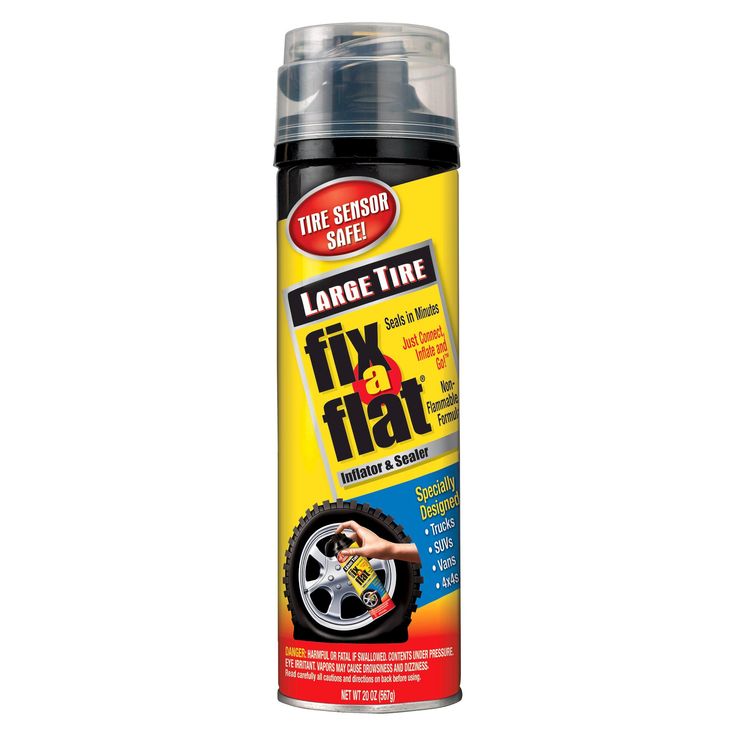 By increasing the lifespan of your tire, you keep your old tires from the landfill. On top of that, the can is completely recyclable, which means it can go in your regular recycling bin.
By increasing the lifespan of your tire, you keep your old tires from the landfill. On top of that, the can is completely recyclable, which means it can go in your regular recycling bin.
As is the case with all tire sealants, we must mention that this product is only a temporary solution. Getting your tire fixed professionally or even replacing it is always the better option.
Slime tire sealant works quite similar to Fix a Flat, although the product claims to be able to fix tire punctures repeatedly for up to two years. That being said, the product warning does state that it is only suitable for vehicles that do not go on the highway. So, if you use this product and travel on the highway regularly, you should get your tire replaced as soon as possible.
Like Fix a Flat, Slime is a product that is environmentally friendly. It is non-toxic, non-corrosive, non-flammable and water soluble. The product does not contain any aerosol either, which makes it an eco-friendly choice.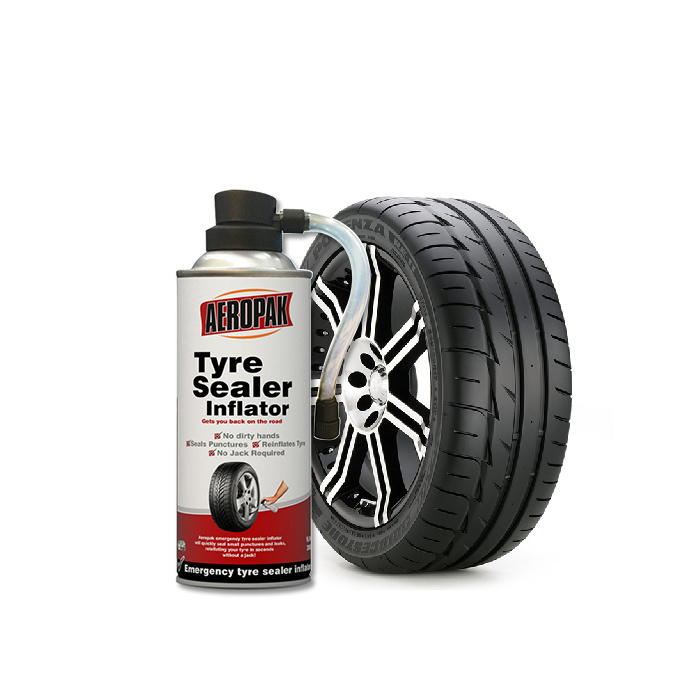
Slime can be used on almost all tires. It is suitable for bicycles, motorcycles, cars, trucks, and ATVs. However, the amount of the product used for each respective tire can differ according to the tire type.
It is difficult to determine the best product between the two, especially when they have such similar functionalities. That being said, Fix a Flat seems to be easier to use and is therefore recommended for those who want a quick fix on the road.
If you are looking for something that can last a little longer before you have to repair the tire, then Slime may provide the better solution.
The usefulness of tire sealant and its applications has been a widely discussed subject. To ensure you are fully informed, here are the pros of tire sealant.
Quick solutionThere is no denying that a tire sealant can provide a solution for a puncture in minimal time. If you are not able to change a tire for whatever reason, a sealant can be just the product to save your trip.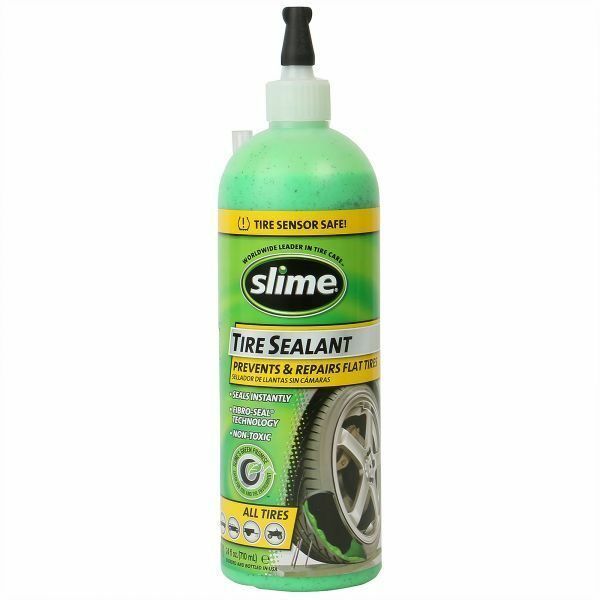
Purchasing new tires can be quite costly, so a tire sealant can buy you some time. If you do not have the money for brand-new tires, then use the sealant until you are able to afford them.
Puncture preventionThere is some research that suggests that sealant can prevent tire punctures. If you often travel along difficult and harsh road surfaces, then a tire sealant could increase the lifespan of your existing tires. While it is not a permanent solution for tire punctures, it could decrease the cost of having to acquire new tires over the course of time.
Tire sealants have a number of pros and cons. Now, it is time to look at the potential disadvantages. So, if you are unsure if you will use a sealant, be sure to read through both for additional insight.
Tire damageWhen you use tire sealant for the first time, it is vital to do your research and read the instructions accompanying the product very carefully. After all, incorrect use of the tire sealant could actually damage your tires.
After all, incorrect use of the tire sealant could actually damage your tires.
The inner working of tire sealant is the very thing that could damage the tire. When you use sealant, it will block the puncture. However, the sealant must heat up in order to perform its function. If the sealant does not warm up fast, it could lead to the sealant piling up in the tire and cause problems such as wheel misalignment. In addition to that, it can have an impact on tire pressure if used incorrectly.
CorrosionSome sealants can cause your wheels to corrode, and this will cost you a lot more than a simple tire replacement. This problem is caused by leaking tire sealant, which can be caused by an inferior product or by incorrect use of the sealant in question.
Future repair problemsDepending on the type of tire sealant you use; your mechanic may refuse fixing the wheel if you have used a certain sealant. There are tire sealants out there that contain harsh chemicals, which is more difficult to work with for your mechanic.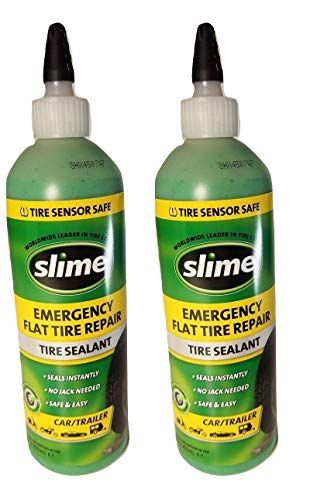
In these cases, your mechanic may advise you get a completely new tire. If you do want to use a sealant in an emergency, call your local garage and inform about the sealants that are safe for you to use.
Tire sealant has as much benefits as it has disadvantages, so you should always use it carefully. However, if you consider the tips we have given in this article, you should be able to use tire sealant safely when an emergency does occur. Still, we always recommend getting your tire fixed permanently as soon as possible.
Photo avtovzglyad.ru
summer tires, after which we again went to the tire masters - after all, the wheels are lowered. Someone was lucky, and the matter ended with a simple patch or tourniquet. But alas, this has not happened to everyone. Why, explains the portal "AvtoVzglyad".
Eduard Raskin
Indeed, the most common cause of flat tires are nails, screws, self-tapping screws and other hardware, generously scattered across Russian yards and roads. However, sometimes it turns out that visually the tire is absolutely intact, but the morning still starts with the pump. What to look for and how to solve the problem? The first thing to remember is the composition of the car wheel. The camera can no longer be found in it, but the tire and disk are in place. Let's start with iron.
Steel "stampings" are not popular with us, everyone and everyone wants to see "casting" on their car, and even better forged wheels. The latter, as well as the original ones, are prohibitively expensive, so most cars in Russia can boast of cast light-alloy "rims" made in China. Everything about them is great - the design, the form factor, and the price - but exactly up to the first hole. Cast discs are easy to deform, and even a slight change in geometry will lead to constant communication with the pump.
The second reason for the loss of integrity and, accordingly, pressure is a crack.
Photos from social networks.
It's easy to get such a gift on a domestic road: a piece of asphalt pavement, cleverly cut “for a patch”, is enough. The crack may be so tiny that it is not even visible to the eye, but this will be enough for the air. Every single day will begin with a peppy crackle of the pump and no less peppy curses.
Moving from the wheel to the tire itself, it is worth remembering the glue that connects them. According to the observations of the employees of the AvtoVzglyad portal, a high-quality tire fitting can last no more than five to six years or 30,000 km “without interventions”. Then the wheel will still start to etch, and it will have to be taken to a specialist. Savings on "chemistry" and the use of various "analogues" will lead to a significant reduction in this period. As, however, and the love of moving on eternally flat tires.
From time to time, improper storage and operation, the tire itself can be deformed. Having become square, the rubber will not stay on the disk, no matter how “moment” it is glued. It will hit the steering wheel, destroy the suspension and affect fuel consumption for the worse, as well as constantly lower it. By the way, a heavily worn tire, the cord of which has already “departed”, will soon please its owner with “hernias” and one day it will simply burst.
Having become square, the rubber will not stay on the disk, no matter how “moment” it is glued. It will hit the steering wheel, destroy the suspension and affect fuel consumption for the worse, as well as constantly lower it. By the way, a heavily worn tire, the cord of which has already “departed”, will soon please its owner with “hernias” and one day it will simply burst.
Photo a.d-cd.net
238020
The tread height is not always an indicator of the "professional suitability" of a tire. Sometimes it happens that the tire visually looks not yet worn out, but cracks appear on it from time and storage in the sun. As in the case of the disk, a couple of microns will be enough for the wheel to start to "etch", forcing you to get the pump out of the trunk more often than usual. Riding on such wheels is no longer worth it - the tire can burst at any time from the minimum road unevenness.
The final item that many people forget is the nipple. The valve, also known as the spool, needs to be replaced regularly, because over time it wears out and begins to let air in the opposite direction. But before you throw it away and buy a new one, you should just try to wrap it up - even the most reliable connections “self-disassemble” from Russian roads.
But before you throw it away and buy a new one, you should just try to wrap it up - even the most reliable connections “self-disassemble” from Russian roads.
Power tool that must be in the trunk when you first enter the hacienda
20487
Photo: Mikhail Tereshchenko / TASS
adv.rbc.ru
See also
A nail, rebar or a sharp stone - sometimes you can damage a tire almost from scratch. First of all, the scale of damage is important, and often rubber can still be repaired. Most often, motorists turn to tire shops for repairs in the middle of autumn or spring - just in the season of replacing summer tires with winter tires and vice versa. In order not to stand in lines, it is worth knowing exactly when to go to the tire shop and when to go to the store.
The most common "injury" to rubber is a puncture and is the most commonly repairable. Professionals in the nearest service will do it much faster, and your hands will remain clean. But if the puncture caught you in a deserted place, and there is a pump and a tire repair kit with harnesses in the trunk, you can patch up the tire yourself. Most often, when repairing the front tires, the wheel can not even be removed, it is enough to turn the steering wheel in the right direction and find the puncture site.
First, the hole is cleaned with a helical awl, the repair harness is smeared with glue and tucked into the eye of the awl, after which it is inserted into the tire hole. With a sharp movement, the tool is removed, and the tourniquet remains inside and securely clogs the hole. The tails are cut with a knife, but it is recommended to leave about 20 mm. After that, the tire can be inflated and the pressure checked.
Repair with tourniquets is not considered long-term, because after some time they dry out and begin to let air through. A more advanced puncture repair method is vulcanization. The hole is sealed with an elastic patch, and the funnel at the puncture site is filled with a special compound. A vulcanizer is put on top, which heats the patch and solders the excess.
A more advanced puncture repair method is vulcanization. The hole is sealed with an elastic patch, and the funnel at the puncture site is filled with a special compound. A vulcanizer is put on top, which heats the patch and solders the excess.
Under service conditions, the puncture is also repaired with cord fungus. The puncture site is processed and drilled to roughen. Everything is smeared with glue, after which a fungus is introduced from the inside of the tire, its cap is rolled, and the excess legs are cut off from the outside.
Photo: PA Images / TASS
A puncture can also be repaired with sealant. Many car manufacturers with run flat tubeless tires put compressor repair kits in the car instead of a spare tire - a bottle of pressurized sealant. The car is raised on a jack, after which the sealant is pumped into the damaged wheel through the nipple. Next, you need to spin the wheel and pump it up. After repair, the car should be driven a couple of hundred meters to check the tightness of the tire. If it has not recovered, the procedure is repeated.
If it has not recovered, the procedure is repeated.
It happens that a screw or a nail closes the hole in the tire, remaining inside. Do not rush to pull it out - until the pressure drops, you can safely get to the service for vulcanization. Sometimes the wheel begins to blow off a few weeks after the self-tapping screw got into it. Therefore, it is better to check tire pressure periodically, and if the pressure sensor lights up, you should at least visually inspect the tire for a nail head.
A bump or bulge most often appears on the side of a tire after hitting an obstacle or hitting a hole at speed. From the impact, the sidewall carcass threads are damaged, the tire ceases to hold the load and pressure, swelling appears. Any small bump eventually turns into a larger one, and with such a defect, the wheel can burst at any time. This is a direct safety hazard because a sudden flat tire can cause loss of control and a road accident.
Some bulges can be repaired, but no patch will ever restore a tire to factory stiffness. The ideal option in this case is to replace the tire. If a hernia has appeared on the tread, then you can extend the life of the tire with the help of cord patches - ready-to-use patches with an adhesive layer. But if swelling is found on the sidewall, the likelihood of repair is minimal, the wheel is easier to change. Blisters on low profile tires are generally not repairable.
The ideal option in this case is to replace the tire. If a hernia has appeared on the tread, then you can extend the life of the tire with the help of cord patches - ready-to-use patches with an adhesive layer. But if swelling is found on the sidewall, the likelihood of repair is minimal, the wheel is easier to change. Blisters on low profile tires are generally not repairable.
Only car service professionals can repair a side cut. Cord patches will be needed to repair the damage, but after some time the wheel will still have to be changed. This method will work only if the gap is not in the shoulder area of the tire, then no one will repair it.
In general, cuts or punctures, unlike punctures, are considered non-repairable, since the integrity of the frame is violated. And breakdowns do occur on the go, when the tire abruptly loses pressure and has time to make only a few turns “on the rims” before it comes to a complete stop. In this situation, the cord breaks and the layers of the tire are destroyed.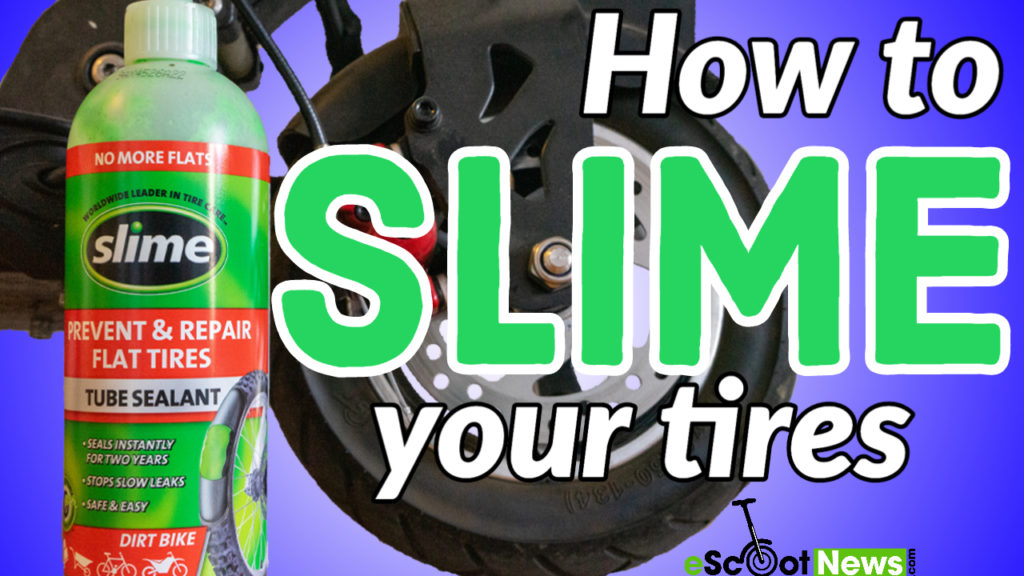 Even if it is possible to close the hole, it is not recommended to use such a weakened tire.
Even if it is possible to close the hole, it is not recommended to use such a weakened tire.
Photo: Mikhail Pletsky / Russian Look
Cracks, sidewall abrasions and unprofessional tire fitting can also lead to tire problems. Cracks can occur as a result of improper storage of tires. Their danger is that moisture begins to flow to the cord, and this already renders the frame unusable. Air can also escape through cracks. Cracks cannot be repaired and tires will not last long. A tire with cracks is deformed, blistered, and may even break while driving.
Rubbing against curbs or driving on uneven roadsides can damage the sidewall of the tire. When driving like this, it is worth inspecting the tires for damage regularly. If a slight wear is found, the wheels can be swapped, which will slightly extend their service life and allow you to delay the purchase of new ones.
Improper tire fitting can damage the tire bead. In this case, the tire will lose its geometry and sit on a disc with a bevel, “eights” will be visible during rotation, and the driver will feel vibration while driving.